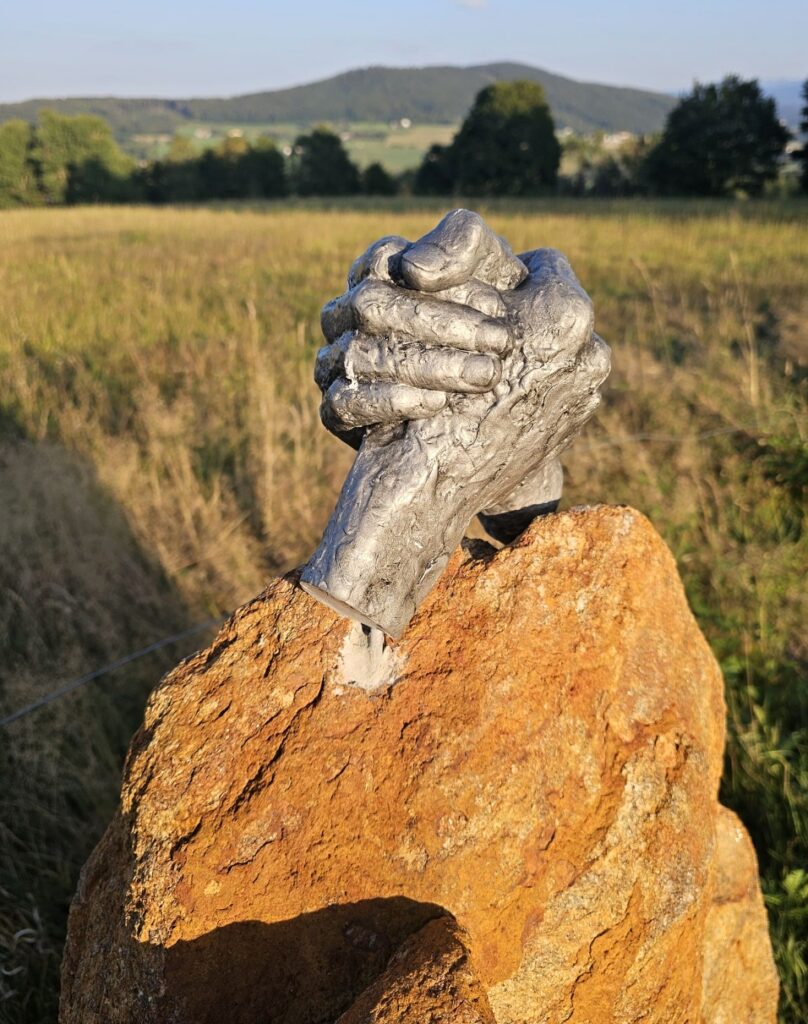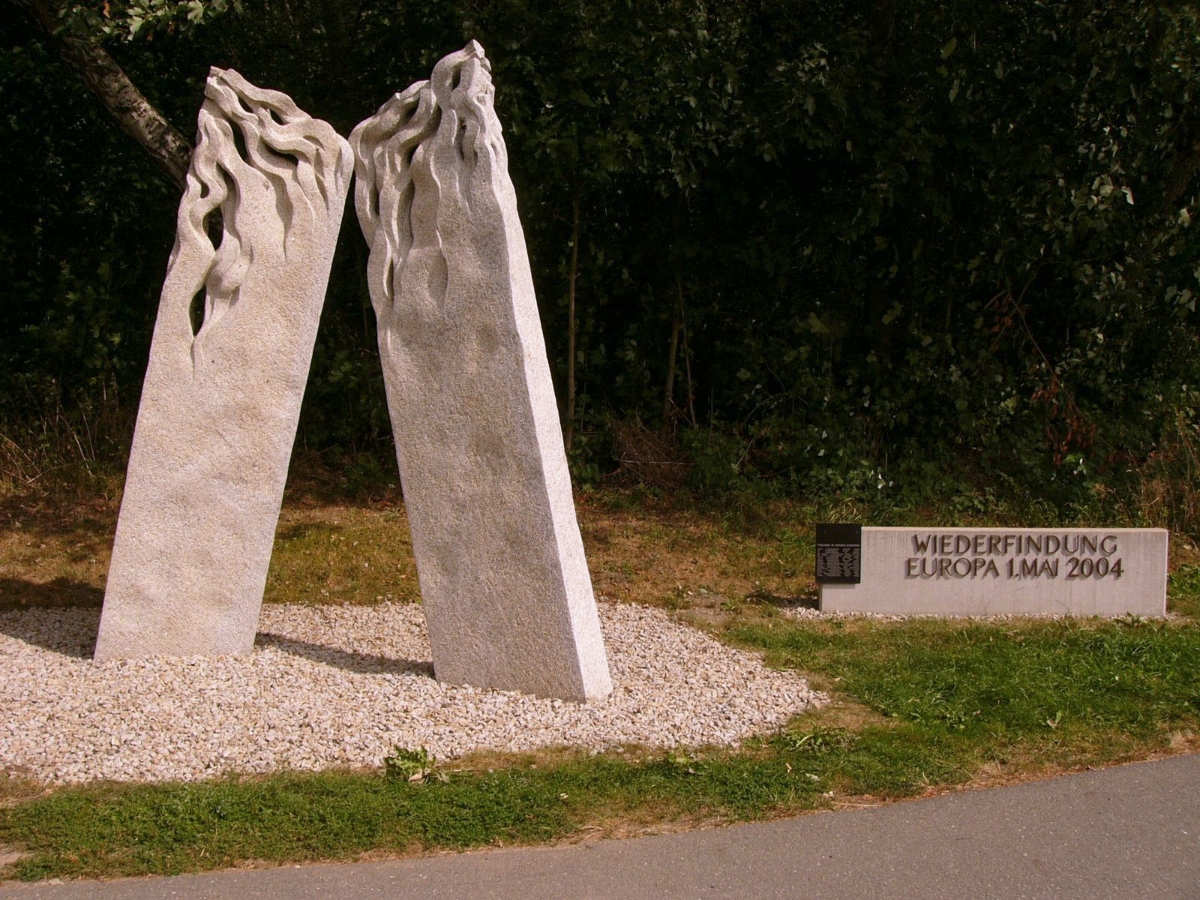Accession to the EU – Memorial of the accession, Krásná u Aše
Fact of the Czech figure „The memorial of cutting the barbed wires of the Iron Curtain”
Part of the „Back to Europe together” topic
On 1 May 2004, the Czech Republic became a member of the European Union. This was part of the biggest wave of enlargement of the united European states since the collapse of the Eastern Bloc and the end of the Soviet Union. Czechs joined Slovaks, Hungarians, Poles, Slovenes, Cypriots and citizens of the three Baltic states. One of the great dreams of the Velvet Revolution came true.
The process of rapprochement with the democratic states of the European Communities (later the EU) began as early as 1990 and continued after the dissolution of the Czechoslovak federation, when an independent Czech state was established. Czech Prime Minister Václav Klaus applied for the Czech Republic’s accession to the EU in 1996, and accession negotiations took place between 1998 and 2002. Once all the conditions for accession had been met and the candidate country’s legislation had been brought into line with European law, the Accession Treaty was signed in Athens in April 2003. The most important and final step took place a few weeks later. Accession was decided by a national referendum in June 2003. This was the first and last referendum in the Czech history, as there had never been a national referendum before or since. In June 2003, 55% of the more than eight million citizens eligible to vote took part. With 23% against, 77% of those who voted were in favour of the Czech Republic joining the EU.
Two small monuments on the Czech-German border commemorate the country’s accession to the European Union. In Krásná, near Aš, a monument was erected in 2004 to express the „rediscovery of Europe”, while in Šumava, under Ovčí vrch above Folmava, a monument of two joined hands was unveiled on the 20th anniversary of EU accession.






